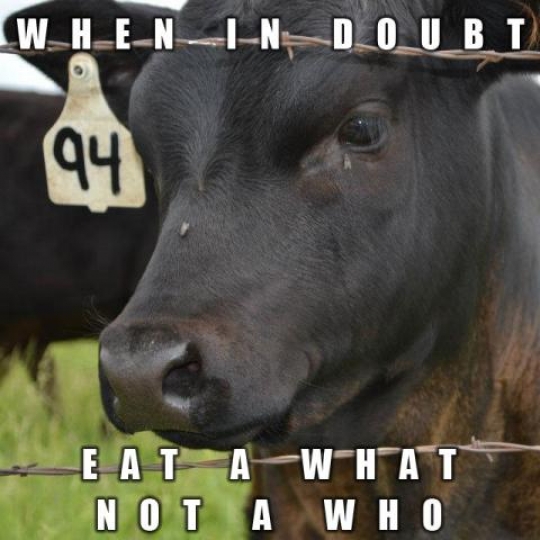I think it's safe to say most people reading this will have heard that humans and chimps are more than 98% genetically identical. We're just as close to bonobos, another great ape, though they're not the same species. Like two distant cousins, we share the same amount of genes with each, while they remain distinct from one another. They are about 99% identical to one another, and together are the only two species in the genus Pan.
As Jane Goodall points out, chimpanzees are more like us than they are like gorillas. Like us, they have long childhoods in which they form intense bonds with their mothers and siblings, usually forming life-long relationships. Chimp childhoods are full of play, learning, and seeking reassurance and attention from their family. They reach sexual maturity relatively late in life, compared to a lot of other animals, again like us. While research is showing more and more that animals other than humans have emotions, we're better able to recognize this in chimpanzees because their facial structure and expressions are so similar to our own. They show joy, sadness, and even signs of clinical depression.
There are uncanny similarities in the nonverbal communication of chimps and humans—kissing, embracing, patting on the back, touching hands, tickling, swaggering, shaking the fist, brandishing sticks, hurling rocks. And these patterns appear in similar contexts as those in which they are seen in humans.
In captivity, chimpanzees can be taught human languages such as ASL (American Sign Language), learning 300 or more signs. They can also master many complex skills on computers.
Chimps and bonobos probably diverged from one another about a million years ago. Humans diverged from chimps probably 7-8 million years ago. Chimpanzees have a much larger population and range than bonobos, who are separated from them by the Congo River. Bonobos live only in the Democratic Republic of Congo, south of the Congo River.
While chimpanzees and bonobos are strikingly similar in appearance, intelligence, and genetics, they have very different cultures. Chimp groups are almost always patriarchal and have very clear power rankings among males. They are very territorial, with males regularly patrolling the boundaries of the group's territory. Just like humans, they can show lethal aggression if their territory is infringed. They tend to only have sex in reproductive scenarios, and the dominant male is the only male who gets to mate. http://evolutionaryanthropology.duke.edu/research/3chimps/chimps-bonobos
Bonobos have matriarchal cultures with weak hierarchies. Males are never the alphas, whereas in chimps you will occasionally see female alphas. They show no lethal guarding of territories and sometimes even mate with members of neighboring groups. And mating is something they do often. Bonobos have sex to make peace after conflict, to reinforce bonds, to reduce tension, for fun, and even as a greeting. They've been described as the libertines of the animal kingdom. They have sex without regard for age, rank, or sex/gender, with few tabooed pairings. http://evolutionaryanthropology.duke.edu/research/3chimps/chimps-bonobos
Now I hope it doesn't seem like I'm saying chimps are the dark side of the Pan genus. They, too, have loving bonds and communities. But let's face it, bonobos with their matriarchal, peaceful, sexually free attitudes represent what a lot of Pagans have yearned for. In the differences between chimp and bonobo cultures, I see the potentials we have in our human lives. Their aggression, nonaggression, rigid hierarchies and loose ones, and opposite approaches to sexuality are all present in us. This inspires me. To see such similar beings, and the radically different ways they have shaped their cultures, means that we have the same power too. We can help shape which direction we're going - for tighter borders or looser ones, for sexual and reproductive freedom or hierarchal control, for more or less care in our interactions with each other.
However different they may be, chimps and bonobos face much of the same threats. That includes hunting and trapping, habitat destruction, and infectious disease. Their major threat is humanity, their cousin. Both chimpanzees and bonobos are considered endangered. There may be between 150,000 and 300,000 chimpanzees left in the world, and only 29,500-50,000 bonobos. Poaching for bushmeat is the biggest threat facing them today. Traditionally, local villagers have hunted bushmeat for food, but it's become an international pastime worth $1 billion annually.
Three suggestions to get involved
- Read Jane Goodall's website for more in depth information on threats to chimpanzees, especially the bushmeat crisis, and consider supporting her in her various programs.
- Help out a group of 66 abandoned chimps in Liberia. The New York Blood Center set up a lab in Liberia in the 1970s to experiment on chimpanzees in hepatitis and HIV research. Until now, the retired chimps have been cared for by the NYBC which acknowledged its responsibility to them, but all funding was cut off in March 2015. They are completely dependent on humans for access to food and water. They didn't get into this situation without human involvement, and they won't get out of it without us either. Please consider signing the petition and making a donation. Time is critical. http://aavs.org/liberia
- The Nonhuman Rights Project is "the only organization working through the common law to achieve actual LEGAL rights for members of species other than our own." Their work is unprecedented in that they're not merely working for reform or welfare, but to grant actual legal status to at least some animals. Right now, great apes (including chimpanzees and bonobos), elephants, and many cetaceans are the most likely plaintiffs because of their demonstrated intelligence and range of emotions. A lot of activism involves talking with friends, protesting, and generally getting the word out. And sometimes it means direct legal action, which is what the Nonhuman Rights Project is doing. Check their website for more information, to donate, or to check for volunteer positions. http://www.nonhumanrightsproject.org




Leave a comment!